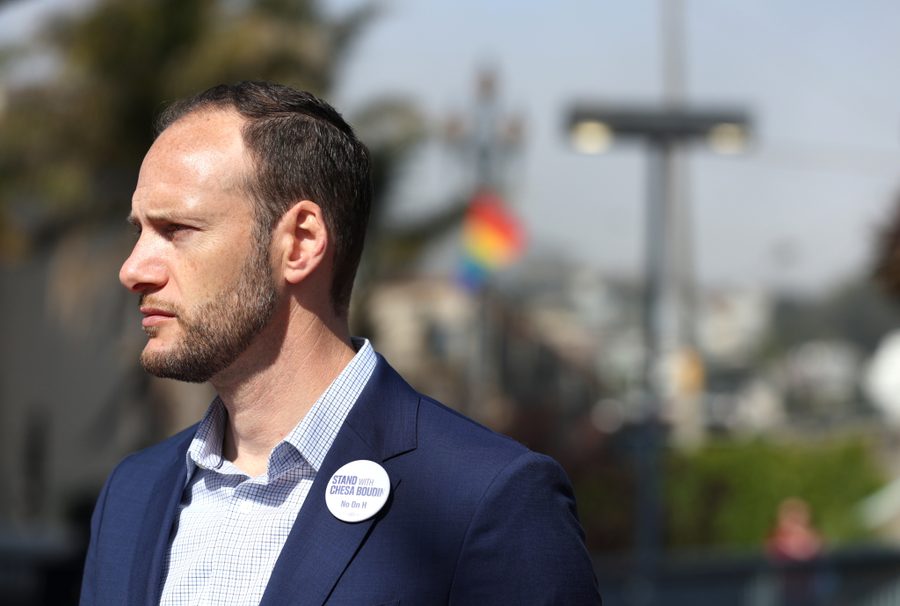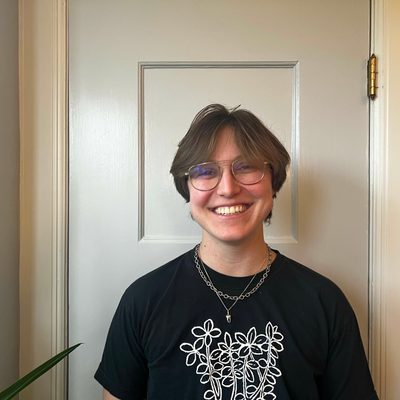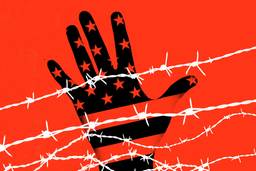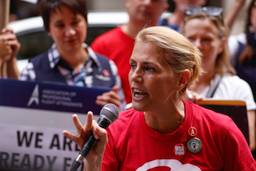Accountability Is Not a Pseudonym for a Cage: Chesa Boudin on Decarceration in our Lifetimes
The former San Francisco District Attorney on accountability, abolition, and the reality of San Francisco politics.
Avalon Edwards

San Francisco joined the short list of cities with reform-oriented prosecutors in 2019 with the election of Chesa Boudin, a rising star in the progressive prosecutor movement. The child of two parents incarcerated for their involvement with the leftist group Weather Underground, Boudin campaigned on ending cash bail, decarceration, and police accountability. The city saw many real results as he followed through on several of these promises his first year in the role. Boudin forbade his staff from requesting money bail under any circumstances, San Francisco’s jail population dropped by 25%, and law enforcement officers were charged in three different police brutality cases.
His term was cut short in the summer of 2022, however, when a $7.2 million recall campaign removed him from office. Support for his recall was couched in the language of public safety and racial justice, but the effort was largely funded by real estate investors, Republican billionaires, and private equity executives. A total of 26% of registered San Francisco voters participated in the special recall election, with only 15% of all San Francisco voters supporting his removal from office.
Now, Boudin is tackling the same issues from outside the electoral sphere. He spoke with In These Times about his new job at Berkeley’s Criminal Law and Justice Center and how he thinks abolitionists can win in San Francisco, California, and the nation. This interview has been edited for length, order, and clarity.
Avalon Edwards: In California, there’s this long history of over-investing in incarceration, but an equally long history of people resisting that. This year, California Democrats supported a budget plan to close five additional prisons by 2027, due in part to that organizing. What do you think the state is doing right when it comes to decarceration, and where do you feel like we could be doing more?
Chesa Boudin: We have created a culture where people expect, as the only possible response to harm that occurs in the community, a punitive carceral response. Changing that requires not only doing the political, organizing, and education work, but it requires shifting culture and building out alternative infrastructure. The year before I took office in San Francisco, there were about a million calls to police. About 5% of those were violent crimes in progress. Police are wasting resources, and in many instances, exposing themselves to harm and causing harm to others. When they’re the first line of response, it’s more expensive for taxpayers, it’s less effective, it’s more likely to result in somebody getting shot and killed. It means that police are spread too thin to do the job that they’re uniquely positioned to do, which is to respond to violent crimes in progress. That’s a long term fight, building out an alternative infrastructure that can respond in real time to overdoses, or to find people shelter, or to do all of the things that police are being asked to do. We have to not only invest the money, we have to also take the time to normalize having a social worker or a case manager respond to a 911 call.
Those of us who are in the struggle are in it because of the urgency of the issues we’re working on. And yet, we also have to have the commitment to stay the course and take the time. I heard the candidate for Harlem City Council, who was one of them Central Park Five, Yusef Salaam, speak recently. He was exonerated after Trump tried to have him put to death for a rape he didn’t commit. He said, we need to have 50-year plans, 100-year plans. The kind of change that we’re talking about is in response to hundreds of years of racial oppression of slavery, of Jim Crow. And so for us to expect that it’s going to happen overnight, it’s just not realistic.
AE: A lot of abolitionists would argue that you can’t simultaneously be an abolitionist and a prosecutor. Do you identify as an abolitionist?
CB: I’ve had a lot of those conversations. One of them I had with Angela Davis, who supported my election and publicly opposed my recall. She said, “Do you see yourself as an abolitionist?” I said, “I’m not sure. My dream would be to live in a world where we don’t have jails or prisons or crime or police. But I also don’t think it’s a good idea to just open the prison gates and let everybody out. I think we don’t have the infrastructure to support people. We have people who are really damaged and who are really violent and who we, at the moment, don’t have good alternatives for.” She said, “Well, that’s the work we have to do in the movement. We have to build those alternatives.”
AE: Dr. Ruth Wilson Gilmore says, it’s not just about taking down death-making institutions, but also creating life-affirming ones. That is abolitionist work, the housing work, the healthcare work, the mental health services work— all of that falls under the category of abolition, not just direct prison closures.
CB: I think that when folks who identify as abolitionist are dogmatic in saying any prosecutor can’t be an abolitionist, or is undermining our movement, or any resources that go to the county jail or the state prison is bad, that’s really dangerous. Let’s say that there are people with disabilities living in the county jail, and those people can’t access outdoors, or the phones to call their loved ones, or a visiting room. We would all agree that that’s a deprivation of rights and we want to sue the county jail to rectify the violation of that person’s rights. I don’t think that’s controversial. And yet, the remedy that would likely be imposed by the court might be anathema to an abolitionist, because the remedy would likely be to give the county jail more money to put in elevators, or to build ramps. If you’re too narrow in your approach, you abandon the person with disabilities to live in unthinkable, unconstitutional conditions. Some of the solutions will mean more resources going into a system that’s failing us. That’s why it’s critical that we are also simultaneously doing the work of building out those alternatives.
AE: There’s something especially heinous about the rate of pretrial detention in California, how often we’re keeping people trapped in jails with particularly bad conditions that aren’t built for long-term confinement. What can accountability look like for these facilities? There is no such thing as a humane jail. There is no safe cage that is going to provide healthcare or medical care in a way that is meaningful for anybody.
CB: Jails are built to cage human beings. It’s hard to think about what could be more of an inhumane structure than a cage, right? A lot of folks who do criminal justice reform point to Northern Europe as a model for a more humane approach to criminal punishment, and to separation from society. There’s a range of conditions– prisons and jails can be much worse, or they can be less worse. If we’re going to have prisons, people should have access to college, to health care, to exercise, to decent nutrition. When you live in a country like Norway or Germany, where everybody in the country has access to some level of universal healthcare, or more access to basic income, or basic nutrition, then it’s not politically controversial to make those things available to people who are being punished for committing crimes. In the United States, we’ve eviscerated systematically, with the complicity of both Republican and the Democratic Party over decades, the social safety net. We have left people on the outside in a position where it’s very easy to divide and conquer politically. That blue collar worker who’s struggling to pay rent, to put their kids through school, to pay out their own college debt, to put food on the table– they look at people who’ve committed crimes and they say, “Why should they get these things that I work so hard for, for free?” My answer is everybody should get a free education, everybody should get free health care. If you have that social safety net, then it’s not controversial.
AE: There are a couple of bills moving through the legislature in California right now to abolish involuntary servitude and create a minimum wage for incarcerated workers. That is a part of the larger conversation about having a minimum wage generally. You can’t really separate how people are treated inside prisons from how they’re being treated outside.
CB: Everybody in the prison comes from a community, comes from a family. If we want to make our communities safer, we know how to do it. We know that people who are housed, educated, clothed, and have access to healthcare are far less likely to not only commit crime, but to be victims of crimes. We make the choice as a society not to provide entire swaths of our population with those basic necessities, and we systematically deprive and undermine efforts by certain communities to improve their conditions and their quality of life. When my dad got out of prison, the state of New York knew exactly who he was, because they kept him in prison for 40 years. And yet when he was released, he didn’t have any kind of state identification that he could use to open a bank account or to sign a lease or to get a job. We set people up to fail. If we care about preventing somebody from being victimized, we have to do the work to set people up to succeed. We have a population of folks who have been in cages for years, they’ve experienced trauma, they’ve been victims of violence, many of them have used violence in the past. So if we know that about them, the right-wing response to say, “let’s create all these barriers to reentry,” is a response that necessarily creates more victims of crime.
AE: The word “crime,” indicates to me a state narrative of harm and violence that doesn’t always encompass things like wage theft, it often doesn’t cover state violence. It doesn’t cover most interpersonal domestic violence, or sexual violence that is never reported for a variety of reasons.
CB: How about drug use on Ivy League campuses?
AE: Right. There’s a million kinds of harm, and things that are technically crimes that will never be considered in what we call a crime rate. Is the idea of a “crime rate” a useful measure when we’re trying to talk about what might actually be harm? Somebody’s not getting housing because they have a criminal record– that’s harm, but it’s not a crime.
CB: I do find it useful. When I was District Attorney, I had a particular job that I was trying to do. The traditional way that DA’s offices are run, is that they are recipients of whatever the police bring them. And the vast majority of cases that most district attorneys will prosecute are cases that the police initiate. And if you’re doing that, then you’re limiting yourself to the categories of crime that are traditionally reported. Every one of the categories is a crime that involves real victims, so I think it’s important not to minimize. If we have a thousand robberies in San Francisco, it does warrant attention and intervention. But there’s lots of categories of crime that are not reported at all. When I was District Attorney we tried to do, in regard to this conversation, two things. One, we tried to make sure that in the cases the police brought us, we were intervening in ways that were as effective and humane as possible. Obviously, a lot of cases we didn’t file. But the ones that we did file, we tried to get people into diversion programs, treatment programs, job programs, housing programs, we tried to identify root causes of crime and tailor accountability. Not to simply be a pseudonym for cage, but rather to look at changing behavior, and to use the criminal case as an opportunity for intervention and for transforming lives away from crime, away from victimization and poverty. The other goal was to dedicate far more resources than ever to investigating and prosecuting the kinds of crimes that police will never bring us. That’s why we created a worker protection unit. That’s why we filed a civil case against the manufacturers of ghost guns. I didn’t want to sit back and wait for the police to bring me yet another Black or brown young man who was living in fear in his own neighborhood because of the proliferation of firearms, and ask me to prosecute him. I wanted to stop the guns from coming into our community in the first place. I wanted to do it in a way that held those companies making millions of dollars in profits off of violence in our communities accountable. In the process, we made very powerful enemies who contributed to the recall against me.
AE: Paying attention to current District Attorney Brooke Jenkins’ period in office, there’s been a real shift in priorities. The failure to prosecute Banko Brown’s killer stands out to me in a city that prides itself on protecting the rights of queer and trans people. How do you react to these developments? What do these decisions reflect about the values of the city?
CB: I live in San Francisco. I love San Francisco. I’ve dedicated my professional career to trying to make San Francisco a fairer and a juster city. It’s sad to see the developments in the last year or so. We’re obviously experiencing a major regression in terms of the direction our city is moving in terms of its values. Because it’s such a deep blue city, Fox News likes to pretend that San Francisco is a really progressive city. The reality is that our Democratic Party, because it’s the only party in town, is a really broad and diverse party. We have people who would be Republicans if they lived in another state. But in California, those people call themselves Democrats. That’s why we see a lot of our local government today picking up and responding directly to headlines from the New York Post or Fox News. With organizing and education, people are gonna see through the lies. I think we’re going to take back our city.
AE: Why did you take on this new role as director of the Criminal Law and Justice Center at Berkeley? What projects are you feeling excited about tackling there?
CB: It’s a job that combines teaching with research, and publishing with advocacy. There’s the added benefit of being surrounded by the next generation of judges and public defenders and reform prosecutors and immigration advocates and tenants’ rights lawyers. I’m excited to learn from and help shape the next generation of folks who are going to be on the front lines of all the issues that I care about. There’s such a rich ecosystem of criminal justice advocates, working on everything from restoring the right to vote, to expanding reentry services to victim-centered restorative processes, to police accountability, conditions of confinement, bail reform.
Avalon Edwards is an abolitionist policy advocate and an editorial intern at In These Times. They are currently based in San Francisco.






